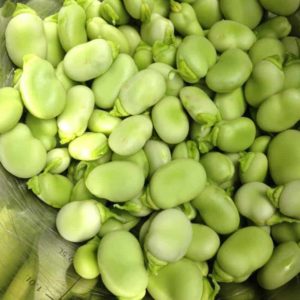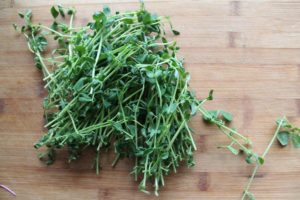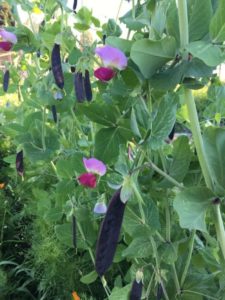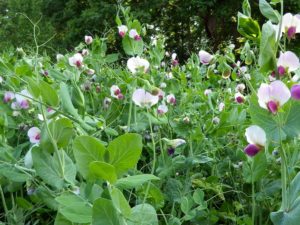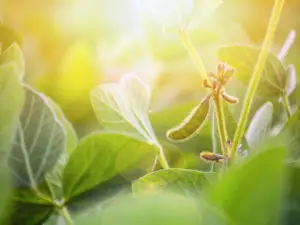Edamame plants are from the beans and peas family, so their composition and nature are the same with just very few differences.
These plants grow in shrubs, trees, or as climbers, and as any legumes, they improve the soil by introducing nitrogen to it after being rooted.
Edamame is a soybean that is still inside the pod but just not ripened. That’s why it is also known as the “young bean.”
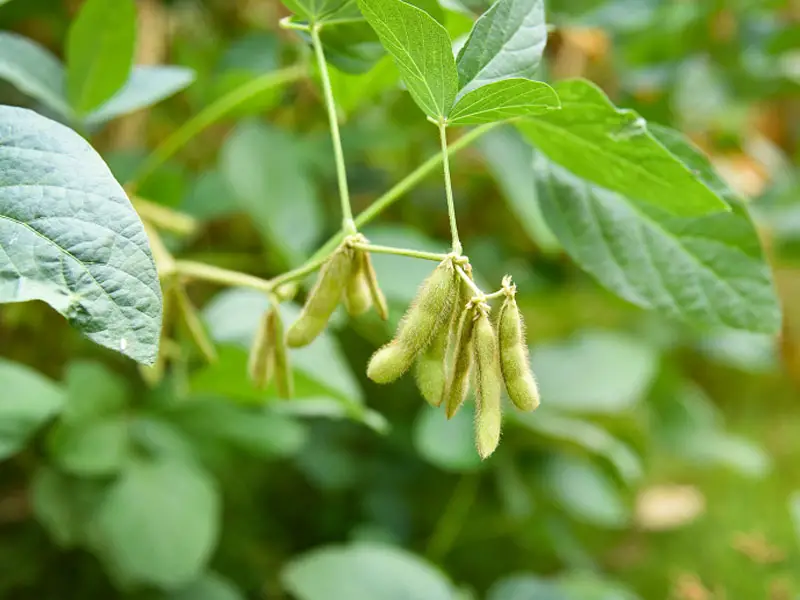
Edamame is scientifically called Glycine max and is part of the family of Fabaceae (legumes).
Edamame plants are a legume, original from Asia. They are trendy in Japanese and Chinese cuisine.
These beans have become more popular around the world because they are significantly nutritious and tasty too.
The nutty, buttery, and slightly sweet beans are high in proteins, vitamins, and essential amino acids required for a healthy body.
| Scientific Name | Glycine max |
| Common Names | Young beans |
| Hardiness | Frost-tender |
| Indoor or Outdoor Plant? | Indoor by windowsills or Outdoor in the warmer temperature. |
| Sun Exposure | Full sun |
| Water | 2-3cm of water a week. |
| Size | Grows up to 1.2m in height and widely spreads up to 45cm. |
| Soil Type | All types of soil but well-drained |
| Soil pH | Neutral to Slightly Acidic |
| Flower | white, yellow, or purple |
| Growing Difficulty Level | Very easy, low maintenance plant. |
Full Grown Edamame Plant Appearance and Characteristics
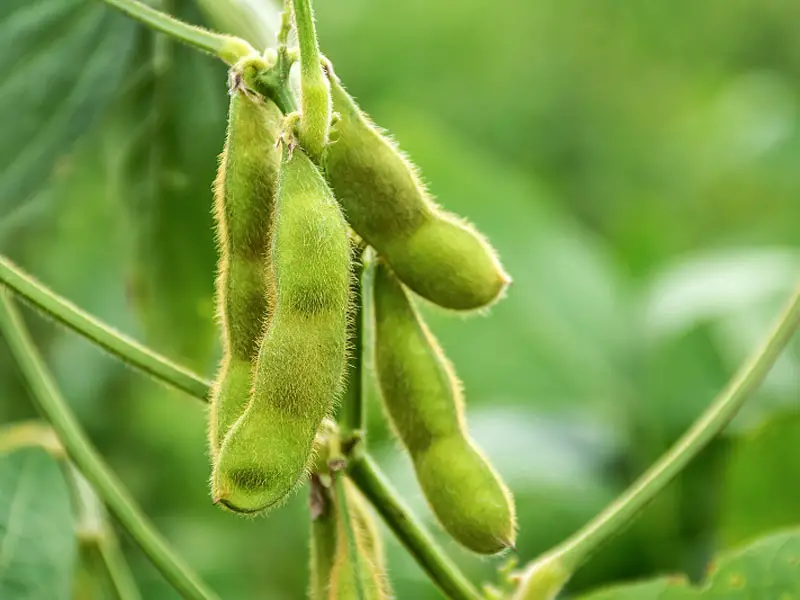
Edamame is a fast-growing, bushy plant.
Its stem or vine reaches up to 1.2cm (3 feet approx.) in height and spreads to about 45 cm wide (18 inches approx.).
Although they don’t need support, some people grow them vertically tied on trellis when space is premium.
Edamame produces clusters of beautiful small white, yellow, or purple flowers.
These plants are bushy and hairy.
Edamame has green, oblong-shaped pods about 6cm long with a couple of beans inside.
They can be confused with snap peas, but the edamame pods are a lot thicker.
These plants adapt easily to different kinds of soils but don’t tolerate freezing conditions.
Like any bean plant, the edamame plant has the capability to fixate nitrogen in the soil, an excellent solution to crop rotation and other cereals.
Advantages of Growing Edamame Plants
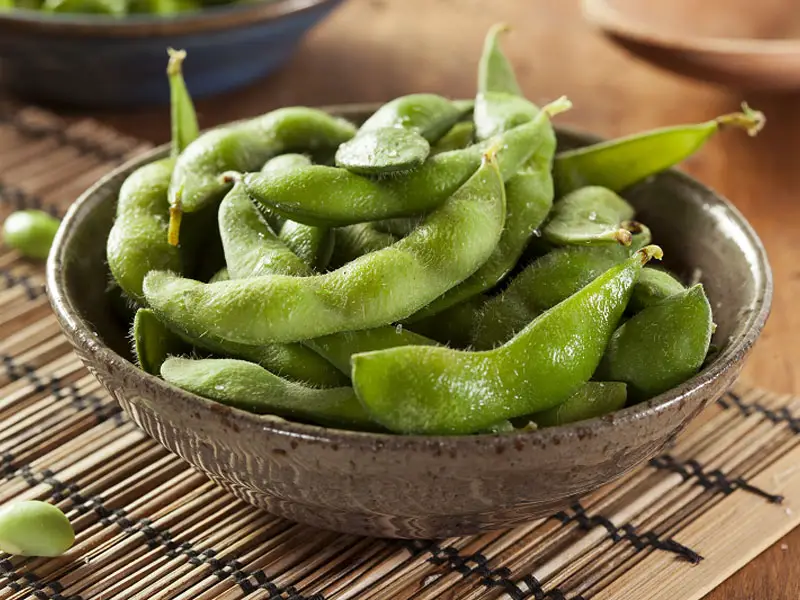
Edamame plants are an immature soybean, and as such, they are a vine plant that helps to improve the soil in your garden because of their capacity to add nitrogen to it.
If you have eyesores in your garden, trailing edamame can solve the problem as their dense stems will help you to hide those unattractive plants.
Edamame plants attract butterflies that will help to pollinate other plants in your garden.
Edamame plants are good for you too. We need to consume high quantities of vegetables to improve our general health, and edamame helps us achieve this.
Studies have also shown that consuming edamame prevents risks of developing cancer.
Edamame is considered a complete protein (it contains all nine essential amino acids).
For this reason, edamame is an excellent vegetable for vegans and vegetarians and perfect for meat-eaters who would like to budget for a meat-free meal.
Edamame also helps to maintain and repair muscle mass.
Edamame Plant Care
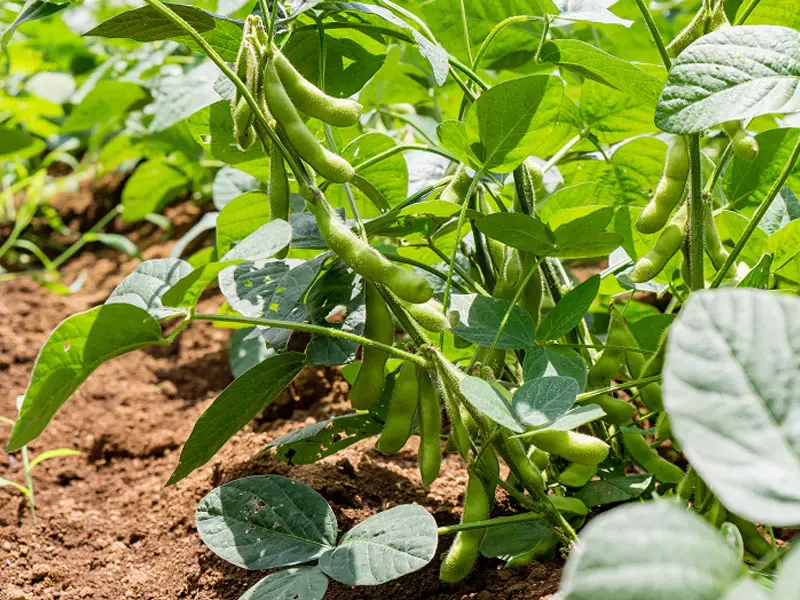
Edamame thrives best when the weather conditions, particularly temperature and humidity, reach about 15 to 21C (60-70F).
Sow edamame seeds in a full sun position. Dig holes of about 2.5 to 5cm (1 to 2 inches) deep in the soil, keeping a distance of three inches (7.5cm) approximately between seeds.
The beans need space to grow happy and to produce better crops. Avoid crowding them when planting.
If in doubt, give them more space!
If you decide growing edamame in rows is better for you, make sure they have spread two feet apart (60cm approx.).
Water regularly and clear up any weeds, as they will steal important nutrients from your plant.
To harvest edamame, pick the plants as soon as they have produced pods.
You know your plant is ready to harvest when the pods are bright green and swollen because this indicates that there are beans inside the pod.
Watering Edamame Plants
Edamame plants demand a lot of water regularly during the growing season.
Water the plants between 2-3cm per week.
Make sure their roots are always moist and should never dry out.
Adjust water supply during hot spells.
There are three important stages when the edamame plants require additional watering: when new shoots are appearing when the plant is flowering, and when pods are growing.
Overwatering increases the production of foliage, humidity, and the risk of fungal diseases, which stop the plants from performing well.
Light for Edamame Plants
Edamame plants need to be planted in full sun, at least 6 hours a day.
Edamame plants tolerate partial shade, but flowers and pod production will be significantly affected.
Soil for Edamame Plants
Edamame plants perform well when in well-drained and slightly acidic soil.
The ideal pH level in nutrient-rich soil should be 6.5.
Temperature and Humidity for Edamame Plants
Edamame thrives best in warmer conditions when the temperature reaches about 15 to 21C (60-70F).
Sow Edamame beans (soybeans) from the middle of spring to early summer when the soil is warm.
Unfortunately, Edamame beans won’t germinate if temperatures are lower than 15°C.
Potting and Re-potting Edamame Plants
- Put some moist, and well-prepared soil in a pot of about 8cm deep as the roots of the beans grow deep.
- You will need a pot of about 8cm deep or a deep root trainer for successful potting.
- Dig a hole of about 5cm deep and place a single bean seed into it. Cover with a plastic lid and place the pot in a warm place at about 20C.
- Seedlings will start appearing in a couple of weeks. Remove the lid from the pot, and now it’s time to move it to a windowsill or a place where the seedlings get enough light and heath.
- Keep the compost moist. Take the seedling gradually outside so they can get used to the outdoor climate. Plant them to the soil outdoors when there is no risk of frost.If planting outdoors is not possible, transplant into a bigger pot of about 13cm in depth. If considering planting in rows, dig holes 30cm apart with a distance between rows of 40 cm.
Propagating and Growing Edamame Plants
Propagating edamame (soybeans) is quite a simple task that can be done with soil (as per above) or without soil. Follow these simple steps for success:
- Take a wet kitchen paper towel or a cotton pad. Wring out if there is excess water on the paper towel or cotton pad. The beans require lots of moisture to germinate but remember that excess water damages the seed.
- Take a couple of seeds you want to germinate and place them on the paper towel or cotton pad.
- Fold the paper towel or cotton pad a couple of times, making sure the seeds are covered all around, so they stay moist.
- After about 12 days, the roots will appear.
- The new plant is ready to be potted!
- Dig a deep hole so the roots can be planted easily into the pot. Water with plenty of water and keep the soil moist.
- Place the wrapped seeds in a small jewelry or sandwich plastic bag. The plastic bag helps to retain moisture, which is important for the beans to germinate successfully.
- Place the plastic bag in a warm and bright place, for example, on a sunny windowsill.
- Leave the seeds sitting by the windowsill in the plastic bag and undisturbed for about two or three days. After this time, the beans will start splitting and developing some roots.
- Keep the paper towel or cotton pad moist, spray them with some water if necessary.
- If after the third day there is no change in your seeds, they won’t germinate. Toss them and start again.
- After two weeks, the seeds should have grown roots, a stem, and leaves.
- You have a new bean plant ready to be potted.
- Once in the soil, the plant will grow vigorously, so it’s important to trim it regularly.
Edamame Seeds to Plant
Apart from the weather conditions, well-prepared soil, and water, the quality of the seeds plays a very important role in guaranteeing a successful crop.
Get the seeds from a trusted supplier or check out this useful link:
Edamame Plant Seeds

FAQ
What’s the difference between edamame and snap peas?
Edamame has a bitter taste than snap peas and the pods of edamame are thicker.
What happens if I harvest when edamame has fully matured?
If you harvest late in the growing season (when pods are dried and brown) you will be harvesting soybeans instead of edamame. Edamame is an unripened soybean.
Why is it important to increase watering during flowering?
The production of pods happens immediately after the blooming of the plant. Watering keeps the plant moist, growing healthy and vigorous.


